About
Top Experiences
Type of Journey
Subscribe to newsletter and stay updated
Read about our travel expeditions, new destinations, new pictures, latest trip schedules
The Great Migration in Africa is a natural event no nature-lover should miss in their lifetime, earning a place on everyone’s bucket list. Set in the birthplace of humanity, the migration of thousands of wildebeests and zebras across the river is a quintessential wildlife experience that often overwhelms the spectators.
There are three components to this spectacular event. The first is the military-style movement of fauna as they move across the savannahs of Serengeti and witness the herd mentality of these animals. The second is seeing thousands of wildebeests and zebras as tiny black spots from the viewpoint. The third and most thrilling component is the animals crossing the river, as crocodiles lay waiting for their bait– the fight for survival.
Your Serengeti and Ngorongoro crater safari gives you one of the best views of this great natural event along with rich information from experience and wise guides.
Starting from Arusha, you dive neck-deep into the African wildlife by heading to the Serengeti National Park. Here, we will spend several days witnessing the Great Migration while meeting the diverse inhabitants of the Park. Moving from the central to northern Serengeti, the Park exploration provides a holistic experience of the endless cycle of life. After the rewarding adventure, the tour takes you on a day trip to the Kilimanjaro National Park, where you will hike through the dense rainforest. Hiking up to the Maundi Crater brings a sight that will have you fill up your camera’s memory card with pictures.
From the Ngorongoro crater and its unique ecosystem to the adventures in the Serengeti National Park, the tour is an experience of a lifetime.
| Day 1 |
Arriving at Kilimanjaro Your safari Serengeti Ngorongoro tour starts with your arrival at the Kilimanjaro International Airport. Our representatives will receive you and transfer you to your hotel at Arusha. Spend the rest of the day at your leisure by either relaxing in your room or strolling around Tanzania's safari capital. |
| Day 2 |
Arusha --> Ngorongoro We start the day early with a flight down to Lake Manyara Airstrip and the subsequent drive to the Ngorongoro Conservation Area. Today will mark the start of your Serengeti and Ngorongoro crater safari as you visit the Ngorongoro Crater for breathtaking bird watching. The vast crater is home to several different species of birds including Flamingoes. Within the boundaries of the conservation lies the Olduvai Gorge, an important site known for proving Africa as the origin of human evolution.
Later, gain a better understanding of the lives of the natives through an exploration tour of the Maasai Village. Check-in your hotel and relax for the rest of the evening. |
| Day 3 |
Exploring Ngorongoro Crater On day 3 of your Serengeti and Ngorongoro crater safari tour, we head down to the Ngorongoro Conservation Area, one of the world wonders for the harmony between the co-existing humans and wildlife. Being a UNESCO Heritage Site, the conservation area is a wildly popular destination. During your whole-day tour in the crater, expect some National Geographic moments with occasional sightings of the Big Five game animals. In the early evening, we exit the crater and head back to your hotel room to relax. |
| Day 4 |
Ngorongoro --> Seronera Post breakfast, we head to the Central Serengeti region or Seronera. On our way, we will pass the Ndutu region and enjoy a game view as we head to our destination for the day. Seronera is a must and the most popular visit on a safari Serengeti and Ngorongoro trip. Known for its rich population of Lions, Leopards, and Cheetahs, Seronera is one of the best places to observe the Great Migration owing to its year-round supply of water and central location.
Ideally, we will reach the Seronera camp by afternoon and leave for game drive post-lunch. However, there can be delays if we come across some fascinating game experiences on our way. |
| Day 5 |
The Seronera Valley After an early breakfast, head out to explore the Seronera region. Being the heart of Serengeti, it is famous for its tree-climbing lions. As you drive around the area, you will see the Seronera River and herds of a variety of animals nearby. You may spot Cheetahs on the open savannah of the River, the Serengeti Plains.
In the afternoon, after lunch, we go for afternoon game viewing, spending more time amongst the Big Cats and other animals like Hippos and Impala. Return by early evening, and spend a relaxing time at the camp. |
| Day 6 |
Heading to Northern Serengeti Day 6 marks your entry to the Northern Serengeti, home to Serengeti's largest concentration of elephants. Wedged between the central Serengeti region and Masai Mara National Reserve, the northern region is remote and has relatively fewer tourists. During the Great Migration, tourists can see thousands of wildebeest and zebras making their way across the Mara River, coursing through the Northern Serengeti. During the Migration season, the Northern region offers the best view.
After the game drive in the morning and breakfast, we head to the Northern Serengeti. Post lunch, we go for the afternoon game drive, returning by late evening for an overnight stay at the camp. |
| Day 7 |
Northern Serengeti The entirety of day 7 of your Serengeti and Ngorongoro crater safari will be spent game viewing and driving in the Northern Serengeti. You will leave the camp with a packed breakfast and lunch. Throughout today, you will see more of the Great Migration sights, aptly wrapping up your safari tour in the Northern Serengeti. Return to the camp in the evening for an overnight stay. |
| Day 8 |
North Serengeti --> Moshi Enjoy the laid back day 8. Post breakfast, you will be transferred to the Kogatende airstrip for your flight back to Kilimanjaro. From Kilimanjaro, you will head to your hotel in Moshi for an overnight stay. Spend the rest of the day in your leisure either by walking around the town or resting in your hotel room. |
| Day 9 |
Hiking through the Kilimanjaro Rainforest The day starts early with an hour-long drive that will take you to Kilimanjaro National Park’s Marangu Gate. Once inside, you hike through the dense rainforest of Kilimanjaro.
During the 3-4 hours of your hike to the Mandara Hut, you will come across a variety of birds and animal species like the colobus monkeys. When you reach the Hut (2700 m above sea), reward yourselves with some rest and delicious lunch.
Later, we will take a short 15-minute hike to the Maundi Crater, where you will witness some of the best views of Mt. Kilimanjaro, Northern Tanzania, and Kenya. Watch the beautiful sunset as we head back to your hotel in Moshi for an overnight stay. |
| Day 10 |
Flying out of Kilimanjaro Day 10 marks the end of your Serengeti and Ngorongoro crater safari tour. After a quick breakfast at the hotel, our representatives will transfer you to Kilimanjaro International Airport. Catch your flight home or your next destination with the fond and delightful memories of your tour in Tanzania. |
Looking for an adventure of a lifetime? Then look no further than the Serengeti Ngorongoro Crater tour by Wild Voyager. Our Ngorongoro Safari Packages promises to immerse you in the heart of Tanzania’s wildlife wonderland offering a memorable experience. From the stunning landscapes to the amazing wildlife, every moment in this UNESCO World Heritage Site will leave you amazed. Ngorongoro Crater, known for its exceptional wildlife encounters, stands out as the most rewarding safari destination in East Africa. Located in the Northern Safari Circuit, the Ngorongoro safari is an experience that cannot be missed.
During your Serengeti Ngorongoro Crater Tour, other amazing sites are also ideal for exploring. You will have the opportunity to go on a classic African safari, exploring both the Serengeti and Ngorongoro to witness the elegance of the wildebeest migration, a true natural wonder.
There are various regions of Serengeti that house various distinct animals and birds. Cites like Arusha offer a modern spin to your Tanzanian safari experience. For those looking for an extra dose of adventure, one can also trek through the breathtaking Kilimanjaro rainforest on Mount Kilimanjaro. After adventurous game viewing, travelers can rest or explore another Tanzanian city, Moshi, before heading home. Our Ngorongoro Safari Packages provide an extraordinary journey through some of Africa’s most captivating destinations.
The best to visit Ngorongoro depends on what your interests are. Each season brings its own unique experiences and opportunities. So here are the best times to visit Ngorongoro Crater based on the seasons and activities.
During November and December expect minor rainfall which will create a warm humid environment. However, it’s important to keep in mind that the crater rim might have a significantly colder climate, so it’s best to have warm clothing.
Get ready to be mesmerized in January and February by the amazing sight of newborn wildebeest calves on the Ngorongoro Grasslands, right outside the crater’s limits. This is a once-in-a-lifetime experience for photography enthusiasts. It is incredible to see these newborns fight to stand up straight minutes after birth. It’s important to remember that predators hiding nearby are continuously keeping an eye on the young. You can see hyenas, leopards, cheetahs, and even lions pursuing their natural prey.
From mid-March to May, there is an abundance of long rains that soak the plains and turn them into a lush, vibrant green landscape. Since this period is regarded as the low season, it is the perfect opportunity for safari enthusiasts on a tight budget to take advantage of discounted rates immediately before the start of the high season. The possibility to see rare ground-nesting species that are essentially unique to this region, such as the splay-footed ostrich, kori bustard, and the interesting secretary bird, makes May a particularly exciting month for birdwatchers. Augur buzzards and long-crested eagles can also be seen descending gracefully over the crater rim, and flamingos gathering above Magadi Lake cause the sky to turn a lovely shade of pink.
The dry season begins in June, marking the start of the busy travel season, which lasts until October. During this time, rates for accommodation options close to the crater typically reach their highest levels. Due to the wildlife’s outstanding visibility in the harsh landscape and their frequent journeys to watering holes, which make it easier to discover near lakes, the dry months are popular with travelers. During this time of year, it’s not unusual to have the amazing chance to see a leopard, lion, rhino, buffalo, and elephant all in one day.
Don’t miss the chance to go on the memorable adventure of a Serengeti Ngorongoro Crater tour. Regardless of the season, the Ngorongoro Crater is an experience that is truly priceless. Reach out to us today to explore the Ngorongoro safari packages created for your dream safari holiday.
Ngorongoro Crater is a wildlife paradise, home to a diverse variety of species. Here, you’ll have the opportunity to encounter the “Big Five” – lions, leopards, elephants, buffaloes, and rhinos – along with an array of other fascinating creatures that call this ecosystem home. It is unique globally since it is home to over 25,000 wildlife and has a very high density of predators. Numerous species, notably rare Black Rhinos, whose population faced a dramatic drop in the years 1964 to 1966, can be found among the diversified population. The crater is also home to the buffalo and the hippopotamus. Wildebeest, different gazelles, Eland, Zebras, Waterbucks, and other grazing species are among the other famous ungulate species.
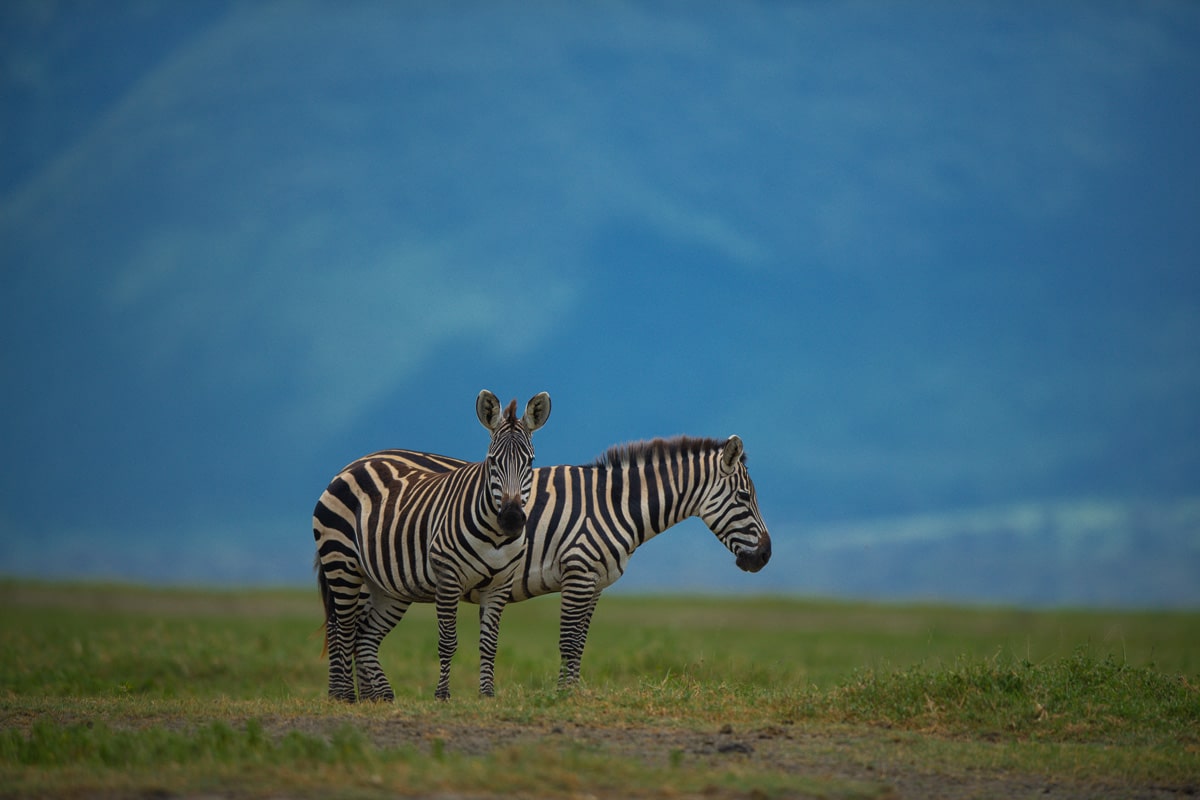
Moreover, the African Big 5, which consists of lions, leopards, elephants, buffaloes, and rhinos, is present in the Ngorongoro region. Due to their powerful nature and toughness, these creatures have historically presented substantial difficulties for hunters. Despite the unpredictable nature of the natural world and its difficulties, our Serengeti Ngorongoro Crater tour and safari packages offer a rare chance to see all these amazing animals in one day.
Go on a memorable adventure with Wild Voyager’s Ngorongoro Crater Safari Packages by WildVoyager. Our well-planned crafted tours offer the opportunity to explore the fascinating wildlife of Tanzania. It will be the safari of a lifetime, you will have the opportunity to witness Tanzania’s vibrant ecosystem. From the abundant wildlife to the beautiful landscapes, every moment is guaranteed to leave you speechless. Don’t miss this to discover the magic of the Ngorongoro Crater with WildVoyager’s expertly created safari packages.
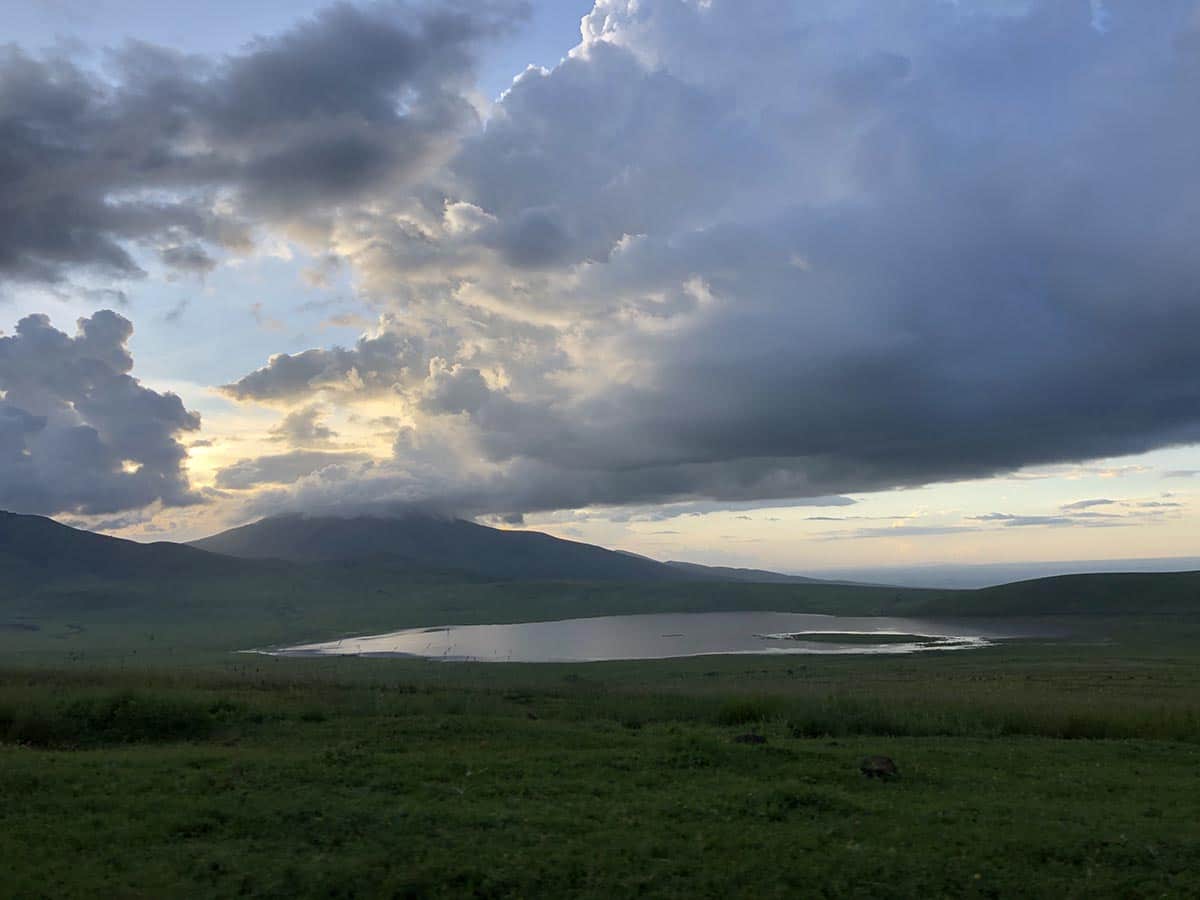
Capturing the beauty of Ngorongoro’s nature requires a keen eye and the right techniques. Here are some general tips to make sure that your images are as stunning as the views you will witness:
On the crater floor, make the most of the entire day because the unique cloud cover creates consistently fantastic lighting for photographs.
Prepare yourself with a variety of lenses, such as wide-angle lenses to capture wildlife in wide-open spaces, medium lenses for up-close encounters, and a necessary telephoto lens with at least 400mm of reach.
Make use of the beautiful lighting during the “golden hours,” which are early mornings and late afternoons, to give your photographs a magical feel that enhances the visual storytelling.
Although the majesty of the environment is attractive, keep in mind to concentrate on the finer aspects of the wildlife and flora to create a stronger connection with your photographs. Have patience as well because wildlife behavior can be unexpected. Be ready to wait for the ideal, striking time to take your picture.
It requires a community to protect Ngorongoro Crater’s ecological wonder. Community members and organizations protect this natural property through volunteerism, anti-poaching efforts, and habitat restoration. Important conservation strategies are based on ongoing research, and responsible tourism is ensured by sustainable tourism practices and educational initiatives. Wildlife paths are safeguarded, and effective collaboration among partners increases impact. The preservation of Ngorongoro Crater is a symbol of human commitment since it addresses climate challenges and offers sustainable livelihoods. With this teamwork, Ngorongoro Crater will continue to be a wildlife sanctuary and a source of breathtaking experiences for future generations. Your Serengeti Ngorongoro Crater tour will allow you to see this magnificent ecosystem and see firsthand the results of conservation efforts.
It is important to ensure your health and safety during your Serengeti Ngorongoro Crater Tour. Here are some basic safety tips:
Vaccinations & Health Checks: Before your trip, consult with a healthcare provider about the recommended vaccinations and safety measures.
Apply sunscreen and drink plenty of water because the African sun can be harsh. To prevent sunburn, consume plenty of water and use sunscreen.
Respect the environment and wildlife by keeping a safe distance from them and refraining from interfering with their normal behavior.
Packing for the Serengeti Ngorongoro Crater tour is essential for a memorable safari in Tanzania’s Ngorongoro Conservation Area. This breathtaking national park features diverse wildlife, including the Big 5. Here’s a basic packing list for your Ngorongoro safari:
Clothing and Footwear: Choose lightweight, breathable fabrics and sturdy, comfortable shoes.
Medical Kit: Hand sanitizer, painkillers, and any prescribed medicines, including anti-malarial drugs.
Tech and Gadgets: Binoculars, camera, charger, ample batteries, and extra memory cards. Don’t forget universal plug converters.
Documents: Make sure you have the necessary documents for your Ngorongoro safari:
Enjoy hassle-free Ngorongoro safari packages that include both Ngorongoro Crater and Serengeti experiences.
A Serengeti Ngorongoro Crater tour involves much more than just exciting safari experiences. The Ngorongoro Conservation Area is a hidden gem of cultural values and extranatural wonders
A Serengeti Ngorongoro Crater tour opens the door to a fascinating experience with the vibrant Maasai and Hadzabe people’ local culture. Our Ngorongoro safari packages will take you on a journey through lasting customs that have withstood the test of time. Engage in ancient rites, become lost in hypnotic traditional dances, and learn fascinating details about their unique way of life. This cultural exchange is a key component of the Safari Packages, improving the whole experience and creating a lasting bond with the extraordinary people who live in this breathtaking area.
Discover the fascinating, 2,000-year-old history of the Ngorongoro Conservation Area. This area has seen a metamorphosis, from prehistoric human occupation to current conservation efforts, which has had a significant impact on the incredible variety of animals that it is home to. Holding this historical tapestry deepens one’s respect for the value of preserving this ecological marvel.
This story also connects to the well-known Serengeti-Ngorongoro Crater tour and the various safari packages. These opportunities provide a chance to engage yourself in the history of this extraordinary landscape, enabling visitors to deeply appreciate its natural and cultural heritage.
Explore the Serengeti and Ngorongoro Crater on our carefully crated Ngorongoro safari packages. Experience the rich landscapes and wildlife of these iconic destinations.
Known as the safari capital of Tanzania, Arusha Town is a great Tanzanian city. As most of the national parks and reserves are located near Arusha town, it gets its nickname ‘Tanzania safari hub’. Arusha is known for its bustling atmosphere and popular attractions. Different nationalities mix and create a fusion of colorful cultures. Arusha, situated at the foothills of Mount Meru, boasts scenic landscapes. There are many monuments, historical sites, unique architecture, museums, historical sites, and other wildlife areas.
To experience the local culture and local life, the lively Maasai markets are ideal. Travelers can get themselves and their loved ones souvenirs. Maasai markets are known for their jewelry pieces, fabrics, paintings, and more.
There are many places to explore nature near Arusha. Tarangire National Park is one of the best parks to visit for a short safari trip. Here, travelers can see diverse wildlife thriving in their natural habitat. For avid climbers, Mount Meru offers various trails and routes.
It is also the second-highest mountain in Tanzania, also housing a growing ecosystem. Other places worth your visit are the Cultural Heritage Site, Lake Duluti, Arusha Declaration Museum, hot springs, and more.
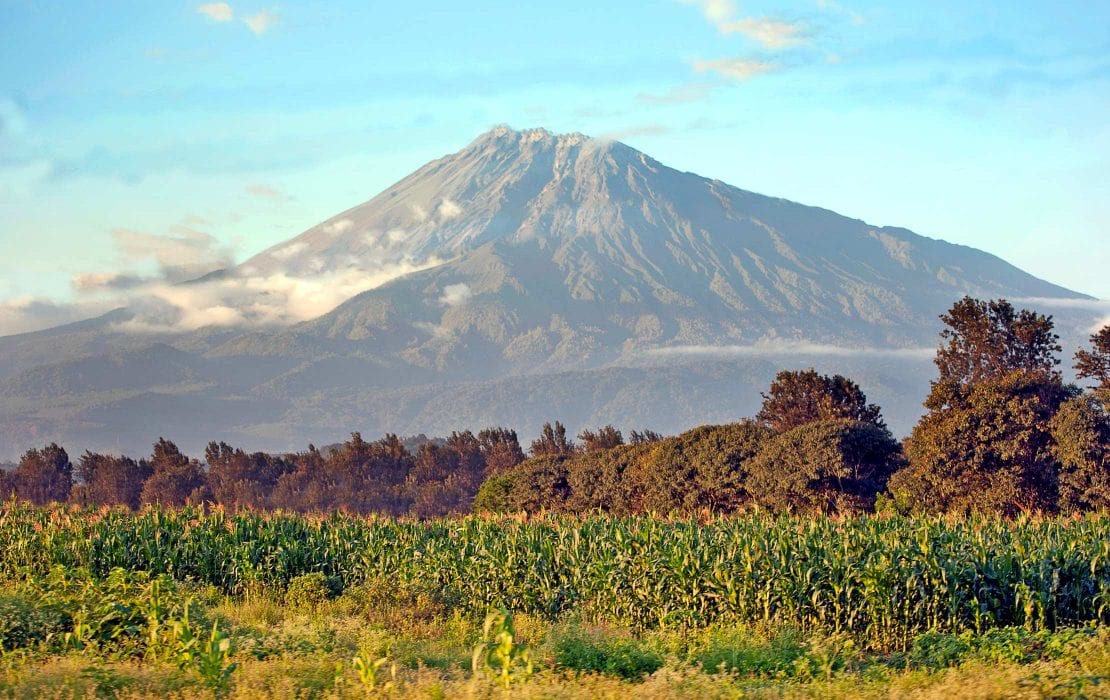
Travelers can start their safari experience from Arusha National Park before embarking on a Ngorongoro crater tour. This park, located in Arusha, offers everything from diverse habitats to a healthy wildlife population and quality accommodations.
Arusha National Park covers Mount Meru. The picturesque mountain adds to the beauty of the park. The landscapes of the mountain contribute to the diverse national park.
One can see alpine forests, woodlands, and even savannahs. Walks and hikes are common on Mount Meru. The park is home to the largest population of giraffes.
It is dotted with other animals like elephants, hippos, buffalos, zebras, and wildebeest. They are seen best during day safari trips, canoe trips, or during walking safaris. Arusha is also a good bird-watching site.
Aside from Mount Meru, Tululusia Hill is one of the main attractions inside this protected wildlife sanctuary.
Clearly, the Ngorongoro crater is the highlight of the Ngorongoro crater tour. This crater is a huge inactive volcano as well as a large caldera. It was formed two million years ago due to a major explosion and collapsed in itself.
The crater is hailed as the seven wonders of Africa. Ngorongoro Conservation Area is full of a variety of landscapes. One can witness savannahs, highland plains, swamps, rivers, and more. Travelers can enjoy wildlife, village visits, and an incredible safari experience.
Ngorongoro crater is also called the Garden of Eden in Africa. It has a glorious topography that is alive with more than 25,000 animals. Four of the Big Five animals are spotted here.
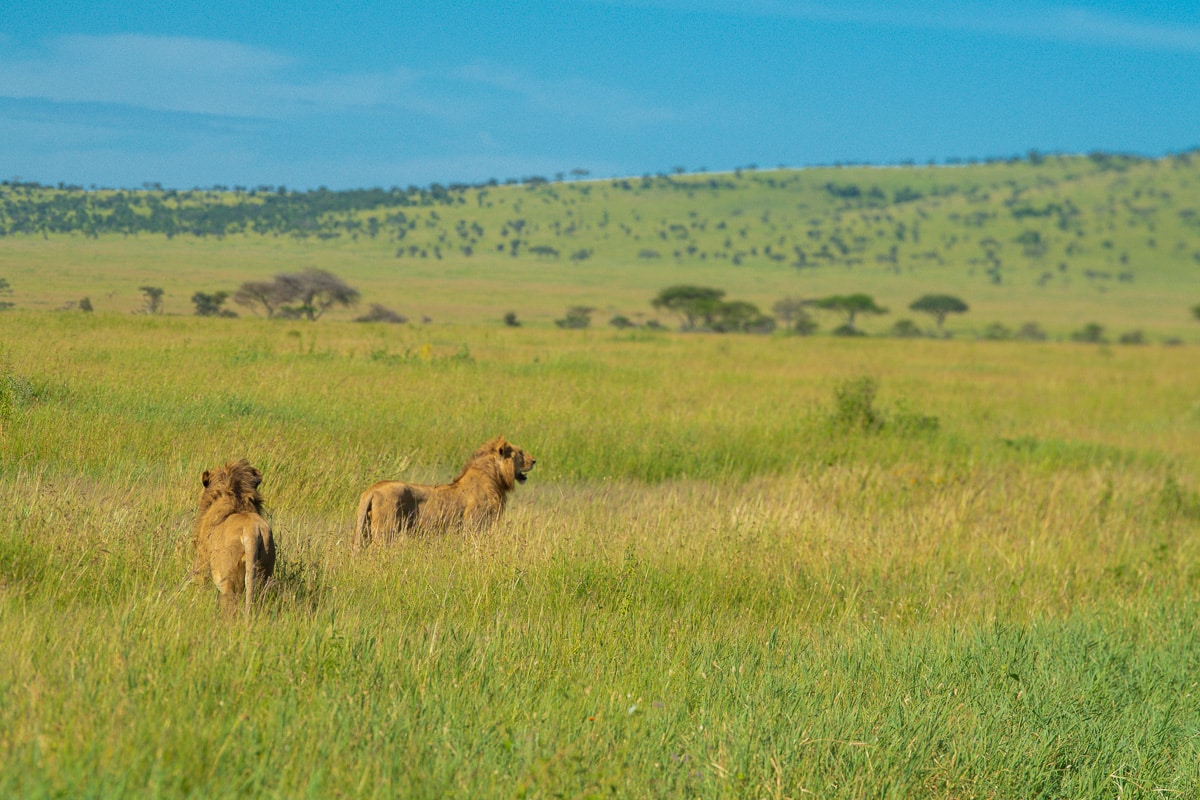
Ngorongoro also protects endangered animals like black rhinos, wild dogs, and golden cats. In the crater lives one of the densest populations of Masai lions. Game viewing and game drives are thrilling.
It is also in the Ngorongoro crater and the Ndutu area where the wildebeest migration passes through. Depending on the rains, the migration enters the crater starting in December. The wildebeest calving season takes place when newborn calves are born and are followed by hungry predators.
Along with prolific birdlife and wildlife, Ngorongoro is also the main center for archaeological study. Significant paleoethological records are found in Ngorongoro’s Olduvai Gorge.
Here, travelers can have a good understanding of early human evolution. Sitting close to the northern region of Ngorongoro is the eastern area of Serengeti. After spending a day or two in Ngorongoro, travelers can resume their safari tour in Serengeti.
A Ngorongoro crater tour is best enjoyed by visiting the Serengeti plains as well. One of the oldest parks in Tanzania, the Serengeti National Park is one of the best wildlife sanctuaries in the world. Its natural beauty consisting of thriving flora and fauna remains unrivaled. It has the greatest wildlife collection and plain game in the entirety of Africa. Serengeti is a large game park and has various regions. It is mainly divided into four sections. The southern or central Serengeti is famously called the Seronera. The wildlife of Seronera Valley is rich and unique on its own.
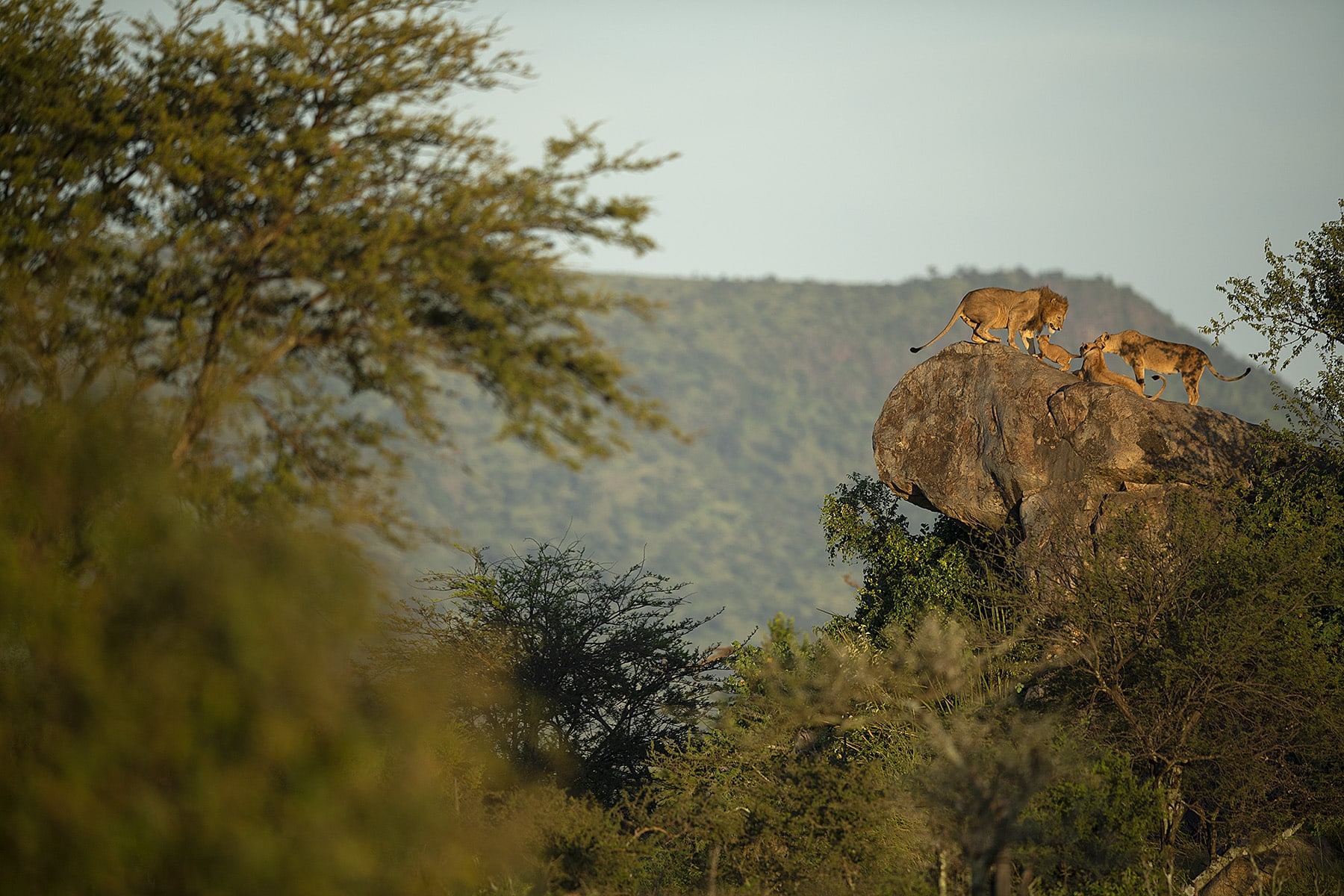
If you’d like to see the best wildlife, this area is ideal. It has one of the densest populations of leopards in Africa. Most of the Seronera wildlife gathers near the Seronera River. Seronera is an exclusive area that provides good game sightings year-round. Some of the most frequent animals spotted during game drives are lions leopards, elephants, wildebeest, zebras, gazelles, and other species. The western corridor and Grumeti are the second regions of Serengeti. This area showcases river crossing sightings of the migration as the Grumeti and the Mara Rivers are found here.
Millions of wildebeests along with herds of zebras, gazelles, and other plain animals cross these rivers which are infested with deadly Nile crocodiles. The Northern Serengeti area is set in a remote location that does not garner much of a tourist crowd. The dramatic sightings of the great migration can also be seen in Northern Serengeti from July to September. Lastly, the Southern Serengeti area is the starting point of the Great Migration.
Standing at an elevation of 5,895 meters tall, Mount Kilimanjaro is Tanzania’s dormant volcano as well as the highest mountain on the African continent. Part of it comprises Kilimanjaro National Park which is a major climbing and hiking destination. This majestic mountain is filled with snow-capped peaks, glaciers, forests, and other geographical features. Kilimanjaro is also called a stratovolcano and contains three peaks. The three cones are Kibo, Shira, and Mawenzi. Kibo is the summit of the mountain and the tallest among the three formations. Undoubtedly, Mount Kilimanjaro is a great addition to the Ngorongoro crater tour.
In 1973, the mountain, along with its six neighboring forest corridors was established as Kilimanjaro National Park. This initiative was undertaken to protect the unique wildlife residing in the mountain.
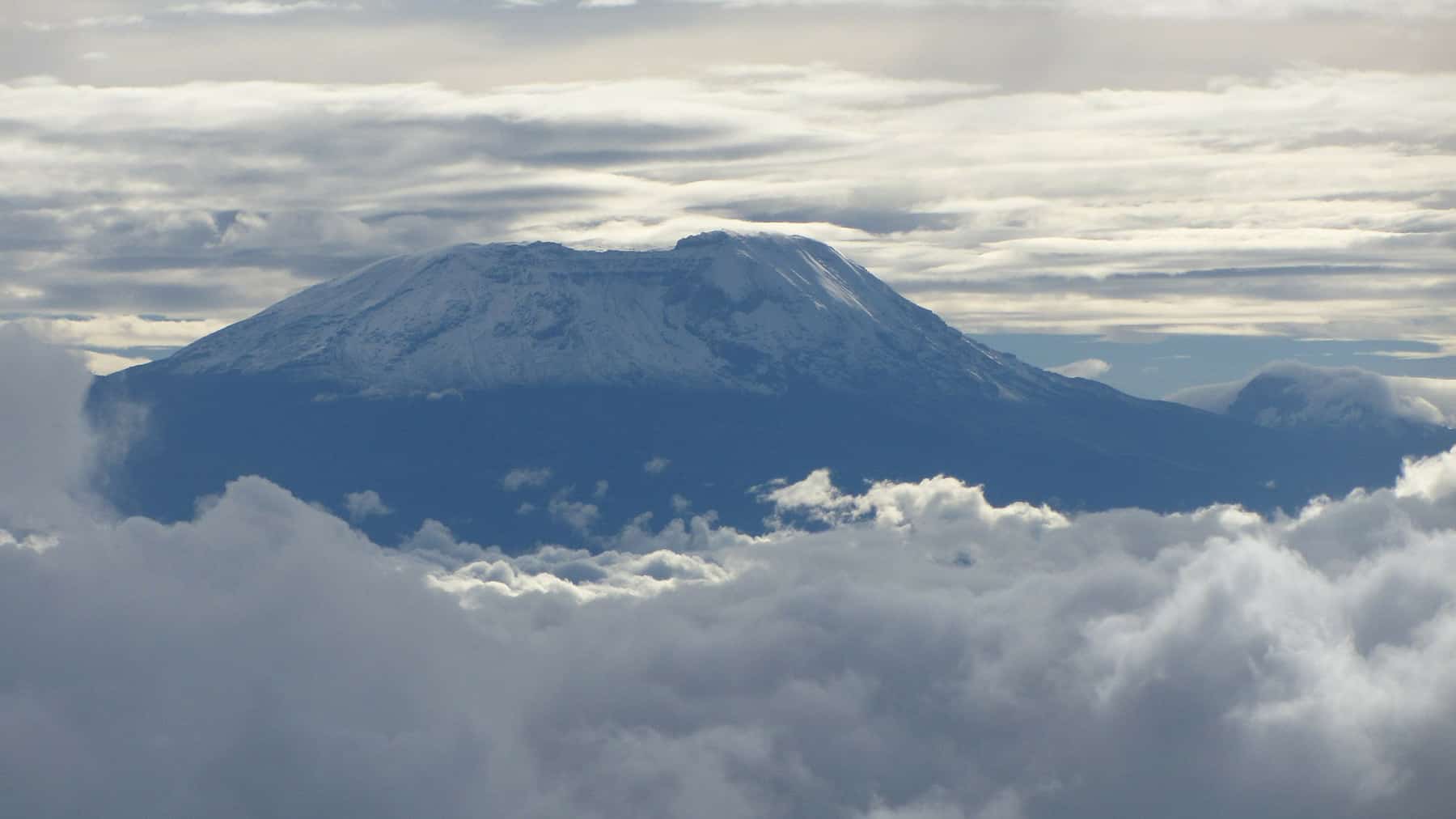
The park is a great wildlife viewing destination as it has distinct flora and fauna species. Animals like cape buffalo, grey duikers, aardvark, marsh mongoose, leopards, African civets, serval cats, and others are found in different habitats of the park. Many monkey species also live inside the park. Travelers can spot blue monkeys, colobus monkeys, or the mantled guereza. Kilimanjaro National Park is home to colorful avifauna as well. One can see different species of turaco, white-necked raven, African pitta, kingfisher, and more.
If you’d like to experience the best of the mountain, consider visiting Kilimanjaro’s rainforest. This region is covered in thick blankets of moss, along with a variety of flowering plants, and various species of monkeys. An amazing collection of birds and other creatures also reside in the rainforest. For the bold and adventurous, treks are the best activity to enjoy at Kilimanjaro. It may take five to nine days to reach the summit of the mountain before descending toward the finishing point. Depending on your fitness and trekking skills, different routes cater to the respective type of climber.
Before ending your Ngorongoro crater safari tour, pick Moshi as your last place to visit. After exploring so many destinations and parks in Tanzania, Moshi is the best place to relax and soak in your bush adventures. A small market town Moshi, lying directly on the slopes of Mount Kilimanjaro. Moshi is well-known for its coffee farms and vibrant streets. There is lots to see and do in this beautiful town.
Moshi is considered to be a host city for the Kilimanjaro marathon. It also has waterfalls, tropical forests, and springs. For starters, one can take multi-day trips from Moshi to the top of the mountain. Guided day trips to the lower slopes of Kilimanjaro are also available.
Since the town has innumerable coffee plantations, travelers can enjoy coffee tours and learn more about its cultivation and production. To view a scenic waterfall, the Kuringe waterfall is recommended as one can also walk through its valleys and hills.
Another popular site of Moshi is Lake Chala. This is a unique caldera lake, known to be the deepest inland waterway in the African continent. Chala has a lakeside forest, a volcanic savanna, and river beds. One can try out hiking, swimming, fishing, canoeing, and walking safaris at Lake Chala.
Moshi also has beautiful Chemka springs perfect for picnics, Chagga caves for the history buffs, as well as motorbike tours.
Along with destinations and sites, Tanzanian hospitality is equally famed. Here are some quality accommodation options for you, ranging from hotels to lodges:
Lying close to Mount Meru is the Arusha Coffee Lodge from the Elewana collections. The lodge is found among the largest coffee plantations in Tanzania. The units are divided into plantation rooms and suites.
Both are nestled around aromatic coffee trees and come equipped with various amenities. Arusha Coffee Lodge has several delicious and diverse dining options. The lodge also offers activities like walks to coffee plantations, traders’ walks, visits to Arusha National Park, and more.
The Ngorongoro Serena Safari Lodge sits on the crater floor, high above the plains. The interiors of the lodge consist of stylized cave paintings, arched stone passages, and torch-lit walls.
The lodge has 74 guestrooms and one suite, each unit blending with the landscape seamlessly. Each room has private stone balconies that overlook the incredible crater.
The lodge also provides sundowners on the crater rim and bush dinners in the summer. It also offers activities like game drives, trips to Olduvai Gorge, and nature wildlife walks.
Situated in South Central Serengeti, Elewana Serengeti Pioneer Camp is located at a strategic location. It also provides the most luxurious African camping safari experience.
The camp offers sightings of the annual migration along with the Big Five, overlooking the Moru Kopjes. Elewana Serengeti has 12 tented camps, each having en-suite facilities.
The tents’ canvas interiors reminisce the bygone era of the early 1900s safari. The best activities offered by the camp are game drives, bush picnics at private safari sites, campfire dining, and hot air balloon safaris.
Built around a rocky outcrop from wood and glass, Seronera Wildlife Lodge is among the top accommodations in the area. Adjacent to the lodge is several waterholes that attract a plethora of wild animals.
It becomes easier to spot the Big Five, big cats, and other mammals. The lodge has 75 rooms that overlook the migration as it passes by Seronera. The lodge also has three restaurants, and several bars, and provides many activities to guests.
Located on the slopes of Mount Kilimanjaro, in the town of Moshi is the Kilimanjaro Luxury Camp. Set in a private garden the camp offers the perfect glamping experience.
It offers two types of rooms, the Presidential Boma and the Safari Cottage. Each room has sophisticated furnishing complete with modern amenities. The suites also offer a breathtaking view of the towering Mount Kilimanjaro.
The camp has a sauna, spa, restaurant, private pool, and a plethora of activities.
There is nothing quite like watching the annual migration, enjoying safaris in the crater, being in awe of the Seronera wildlife, and visiting modern towns in Tanzania.
Our Ngorongoro safari packages promise a memorable blend of natural wonders, wildlife encounters, and enriching cultural experiences. So, get in touch and book your safari adventure with Wild Voyager today!
Ngorongoro Conservation Area, located in Tanzania, is a unique and special place for several reasons and a few of them are mentioned below:
Natural Wonder: The Ngorongoro Crater, the biggest complete volcanic caldera in the world, is located here and is home to a wide variety of wildlife.
Biodiversity Hotspot: A popular location for safari lovers, it is home to the “Big Five” and a significant population of diverse animals.
Cultural harmony: The Maasai live in harmony with nature, displaying a special example of how people and animals may cohabit.
Treasure of Archaeology: With its important fossil discoveries, the Olduvai Gorge provides critical insights into the evolution of humans.
Success in conservation: As a UNESCO World Heritage Site, Ngorongoro serves as an international role model for good conservation practices.
In a nutshell, Ngorongoro is a place of great ecological and cultural value that provides tourists with an absolutely extraordinary variety of experiences in terms of wildlife, scenery, and interactions between cultures.
Ngorongoro Crater offers a diverse range of wildlife including lions, elephants, buffaloes, black rhinoceros, leopards, hippos, wildebeests, zebras, hyenas, cheetahs, giraffes, flamingos, warthogs, gazelles, and a rich variety of bird species.
A famous tourist destination because of its outstanding biodiversity is Ngorongoro Crater. It is a popular location for safari enthusiasts since it is home to a great concentration of wildlife, including the “Big Five” (lion, elephant, buffalo, leopard, and rhinoceros). Additionally, it offers a unique and eye-catching experience because of its breathtaking surroundings, which include a dormant volcano and beautiful meadows. restricted entry and conservation measures guarantee a sustainable and enjoyable safari adventure.
Absolutely! Ngorongoro Crater is one of the few places where you can witness the Big 5 in one location. This renowned group includes lions, representing power, elephants symbolizing strength, buffaloes embodying resilience, elusive leopards, and the endangered black rhinoceros. It’s a unique opportunity to encounter these iconic species in their natural habitat.